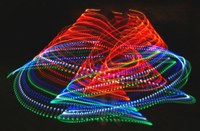 That is one of the critical observations made by TWAS Fellow Luiz Davidovich, professor of physics at the Federal University of Rio de Janeiro in Brazil, in the most recent edition of the TWAS Newsletter.
That is one of the critical observations made by TWAS Fellow Luiz Davidovich, professor of physics at the Federal University of Rio de Janeiro in Brazil, in the most recent edition of the TWAS Newsletter.
"For example, to build a quantum computer, you need new ideas," he notes, "and new ideas can come from anywhere. What is required", he says, "is an inviting environment that encourages creativity and bright young people to turn their minds to these problems. You don't need to be in the United States or Europe for this to happen."
In the conventional world (physicists refer to this as the classical world) that we live in, people and things can only be found in one place at one time. But in the strange world (at least strange for us) of quantum physics, subatomic particles can exist in different places at the same time. This aspect of quantum physics is called superposition.
While no one can imagine being in Rome and Rio de Janeiro at the same time, researchers have found that such counterintuitive theoretical constructs as superposition nevertheless closely conform to mathematical calculations and experimental evidence in high energy physics.
This has made quantum physics worthy of study in the 'abstract' world of deep thought and potentially applicable in the 'real' world in which we live and work.
The most notable potential real world application of quantum physics lies in efforts to develop quantum computers, which use the superposition of subatomic particles to carry out calculations much faster than classical computers. Quantum computers could prove to be invaluable tools in any number of activities, ranging from securing personal information on the web (through encryption) to developing more precise models for understanding the impact of climate change (through the ability of quantum computers to rapidly process extraordinary amounts of data).
However, going quantum, both in theory and practice, poses a number of gnarly challenges for physicists. Not the least of these challenges are these: How does the mysterious world of quantum physics translate into the macroscopic world that can be seen and touched? Where do the borders of these two worlds lie, and how are particles transported from one world to the other?
Davidovich's research has explored such mind-bending challenges by focusing on the quantum environment – that is, everything surrounding quantum particles. Much like the environment in which we live influences our thinking and behaviour, the assumption is that the environment in which subatomic particles live influence quantum phenomena, including superposition.
"It is largely the invisible neighbourhoods where subatomic particles reside that likely hold the key to understanding the subtle transitions between the classical and quantum worlds", Davidovich notes. But quantum neighbourhoods, he would also acknowledge, are extraordinarily difficult to enter, inherently unstable and, for now, defy adequate explanation and understanding.
Find the full TWAS Newsletter article below.

